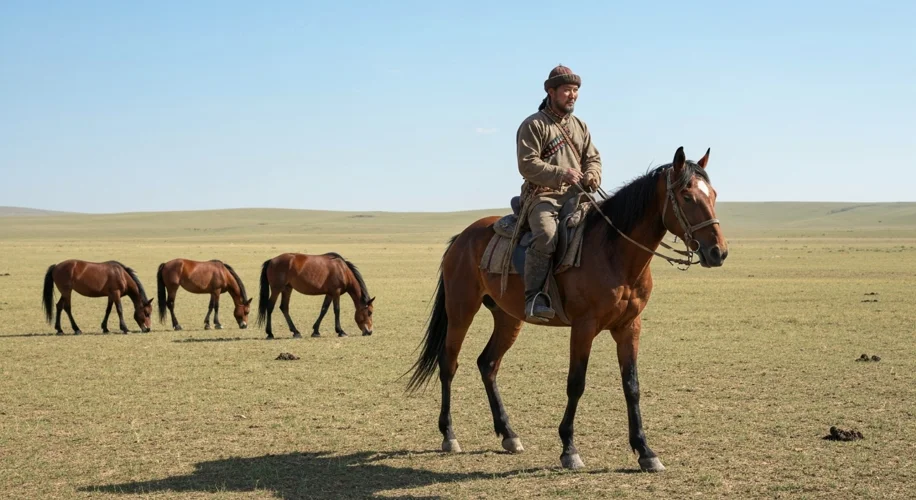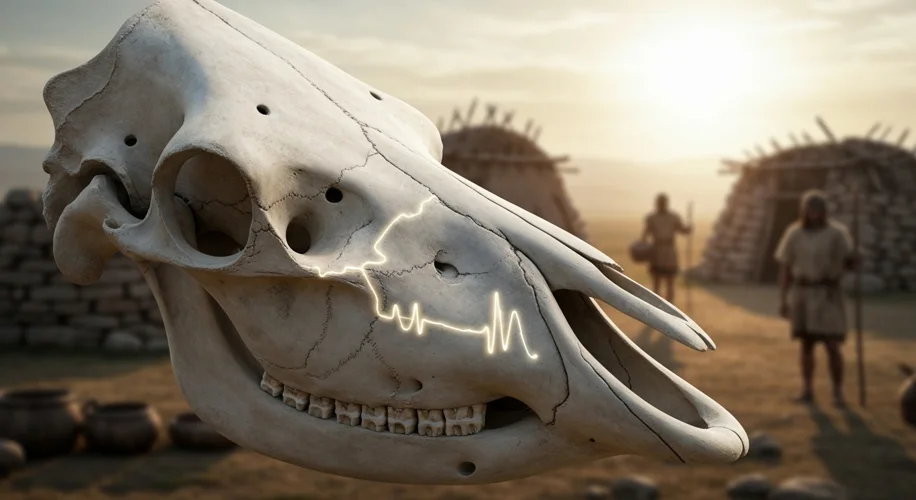For millennia, humans and horses existed as separate entities on the vast plains of Eurasia. Humans hunted them, admired their speed, perhaps even felt a primal fear of their untamed power. But the idea of riding them, of harnessing that power for travel, for conquest, for the very fabric of civilization, remained a distant dream. What changed? Was it a single, serendipitous genetic flicker that unlocked this extraordinary partnership?
The story of horse domestication is not a simple tale of man taming beast. It’s a complex tapestry woven with threads of necessity, culture, and, as recent science suggests, a touch of biological destiny.
For centuries, scholars debated when and how humans first truly bonded with horses. Theories abounded: perhaps it was the Botai culture of ancient Kazakhstan, around 3500 BCE, who were among the earliest to utilize horses, evidenced by their distinctive corrals and the presence of mare’s milk residues on pottery. Yet, evidence of widespread riding, especially the sophisticated bit wear that indicates control by reins, appeared much later.
The true shift, the moment when horses went from being livestock or prey to partners in human endeavor, seems to have occurred with the Yamnaya culture, a nomadic people who expanded from the Pontic-Caspian steppe around 3000 BCE. These were the people who, armed with new technologies and a deep understanding of their environment, began to move across continents, and with them, their horses. The advent of the chariot and later, true horseback riding, revolutionized warfare and facilitated the spread of ideas and languages. Suddenly, distances that once took months to traverse could be covered in weeks.
But what allowed this transformation? It wasn’t just about brute force or clever halter designs. Scientists have long suspected that genetic changes played a crucial role. The quest for a single ‘domestication gene’ has been elusive, a holy grail for archaeogeneticists. However, recent groundbreaking research has pointed towards a specific mutation that might just be the key.
Imagine a horse in the wild, powerful and swift, but also with a wildness, an unpredictable spirit. Now imagine a horse bred for centuries, its lineage influenced by human selection, exhibiting a calmer disposition, a greater tolerance for human presence, and a more responsive nature. This wasn’t an overnight change. It was likely a gradual process, driven by the benefits of having more manageable horses.
The breakthrough came with the analysis of ancient horse DNA, looking for markers that differed from their wild ancestors. Researchers identified a gene called RS1, which plays a role in the development of the nervous system, particularly in dopamine pathways. A specific variation, or allele, of this gene, RS1-T, has been found at high frequencies in domesticated horses, especially those associated with Yamnaya and their descendants. This RS1-T allele is linked to a calmer temperament and reduced aggression – precisely the traits needed to transition from wary prey animals to reliable steeds.

Consider the implications: a horse with the RS1-T allele might have been less prone to spooking, more likely to accept a bit, and more amenable to being ridden. This wasn’t a single magic bullet, of course. Domestication is a complex interplay of genetics, environment, and human behavior. Other genes controlling bone density, limb structure, and even vocalizations likely contributed to the process. But the RS1-T mutation seems to be a strong candidate for the genetic ‘switch’ that made widespread riding feasible and, ultimately, transformative.
The impact of this genetic shift cannot be overstated. It fundamentally altered the course of human history. Empires could expand further and faster. Nomadic cultures, already adept at horse management, gained unprecedented mobility, leading to the great migrations that shaped Europe and Asia. Warfare was revolutionized, with cavalry becoming a dominant force on battlefields for centuries. Trade routes, like the Silk Road, became more robust, fostering cultural exchange and economic growth.
The consequences rippled through every facet of society, from how food was produced to how societies were structured. The ability to cover vast distances with ease led to new forms of social organization, the spread of languages, and the transmission of ideas, religions, and technologies.
So, while we may never pinpoint the exact single moment or the sole gene responsible, the discovery of the RS1-T allele offers a compelling glimpse into the biological underpinnings of one of humanity’s most significant partnerships. It’s a reminder that history isn’t just made by kings and conquerors, but also by the quiet, unseen shifts within the very DNA of the creatures that helped shape our world. The next time you see a horse, remember the ancient genetic whisper that allowed it to carry us not just across land, but across the ages.

